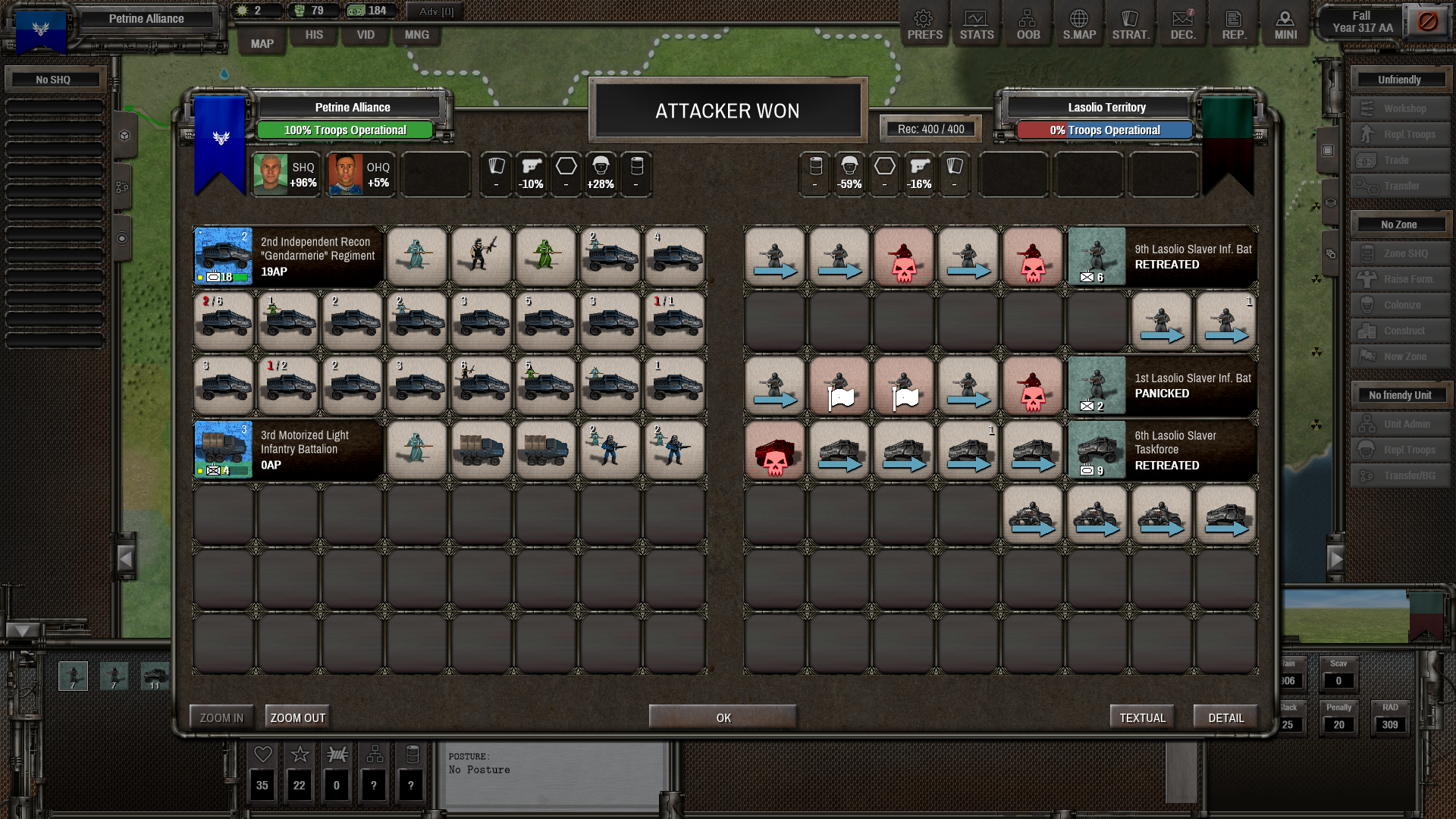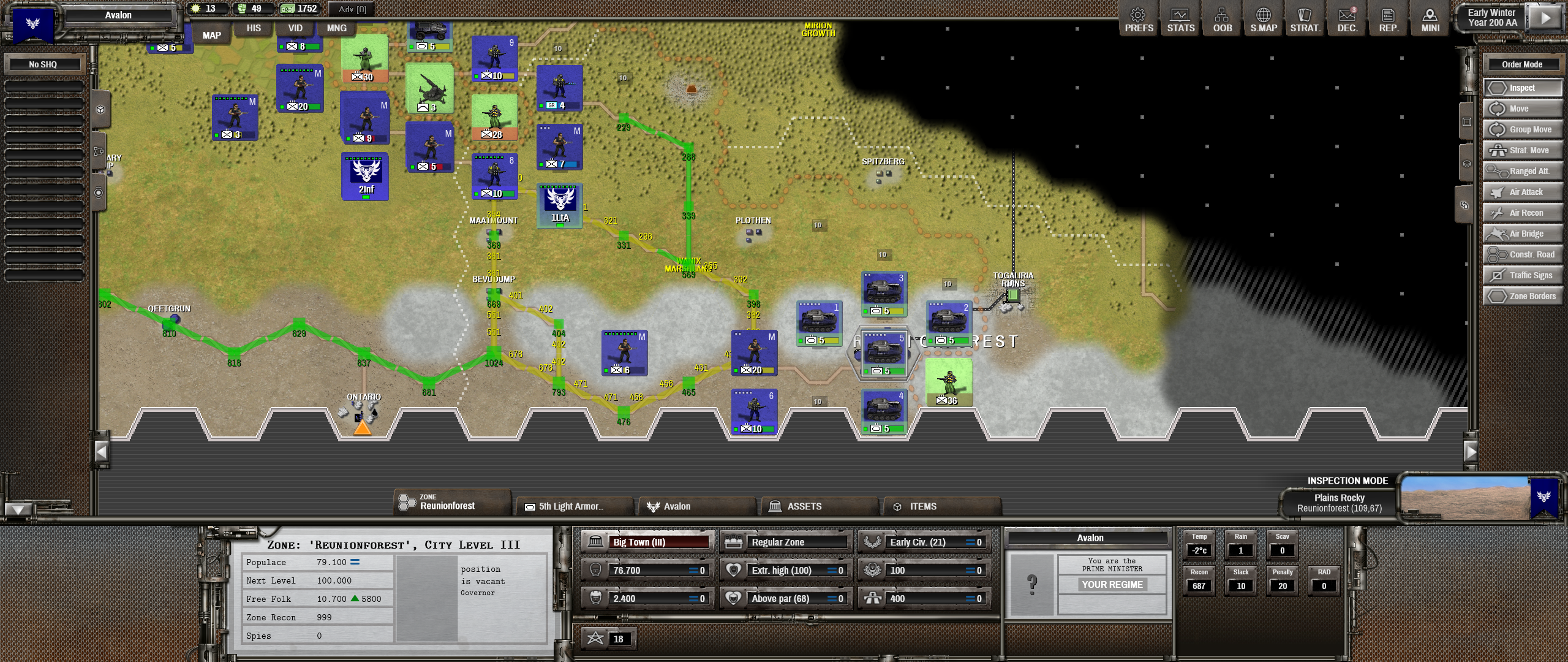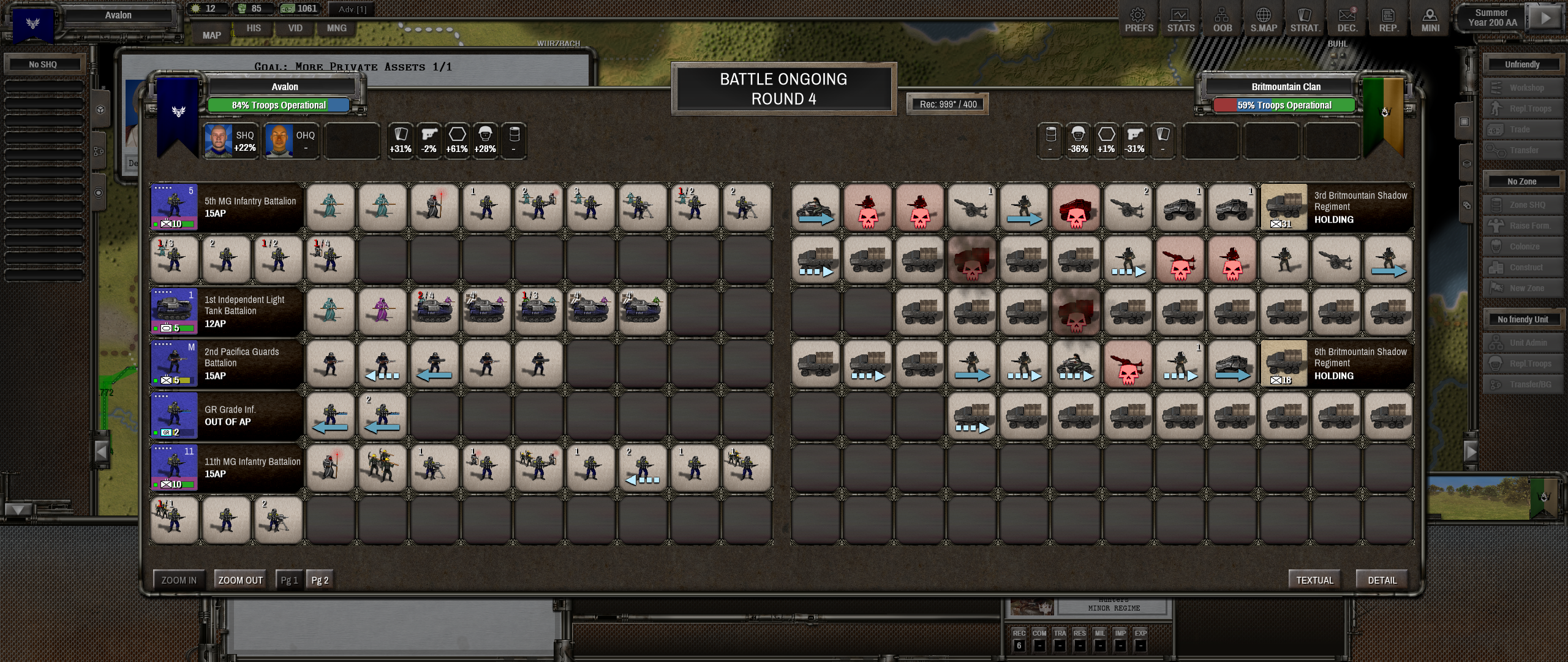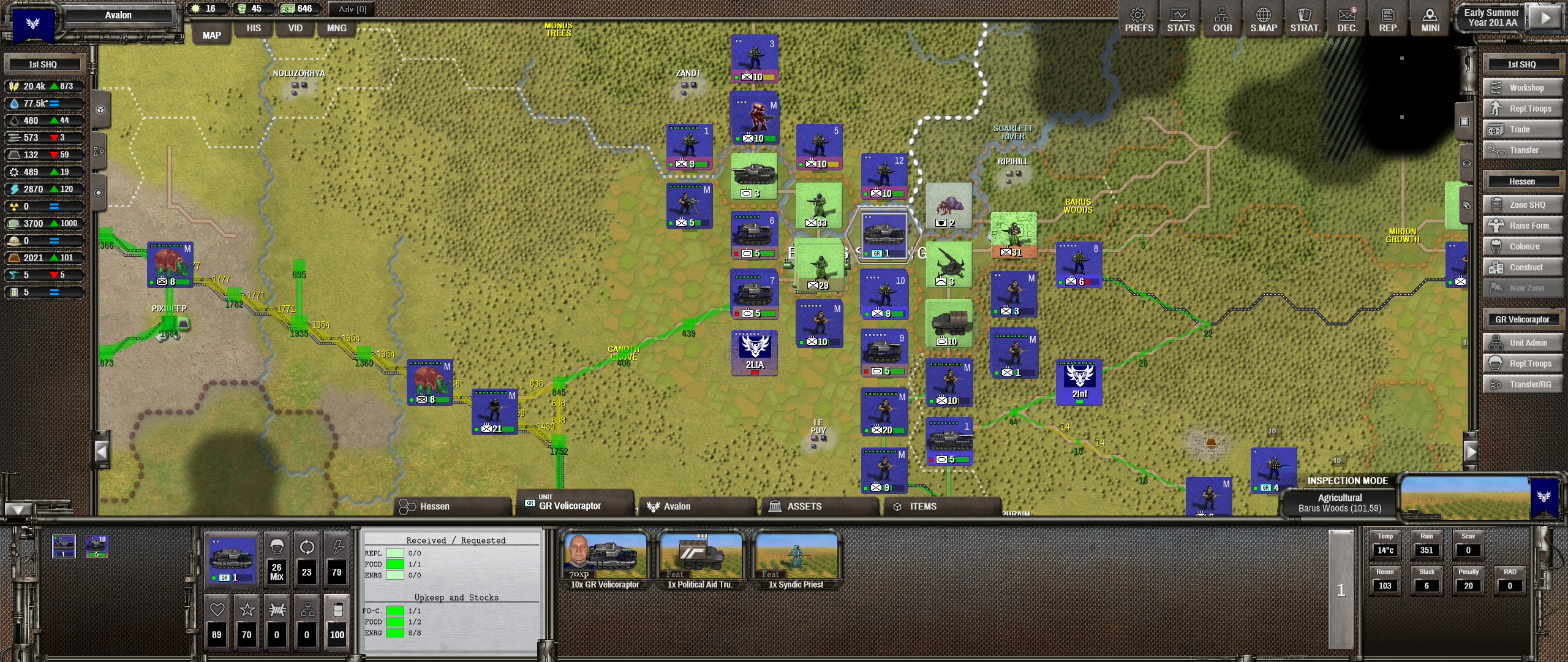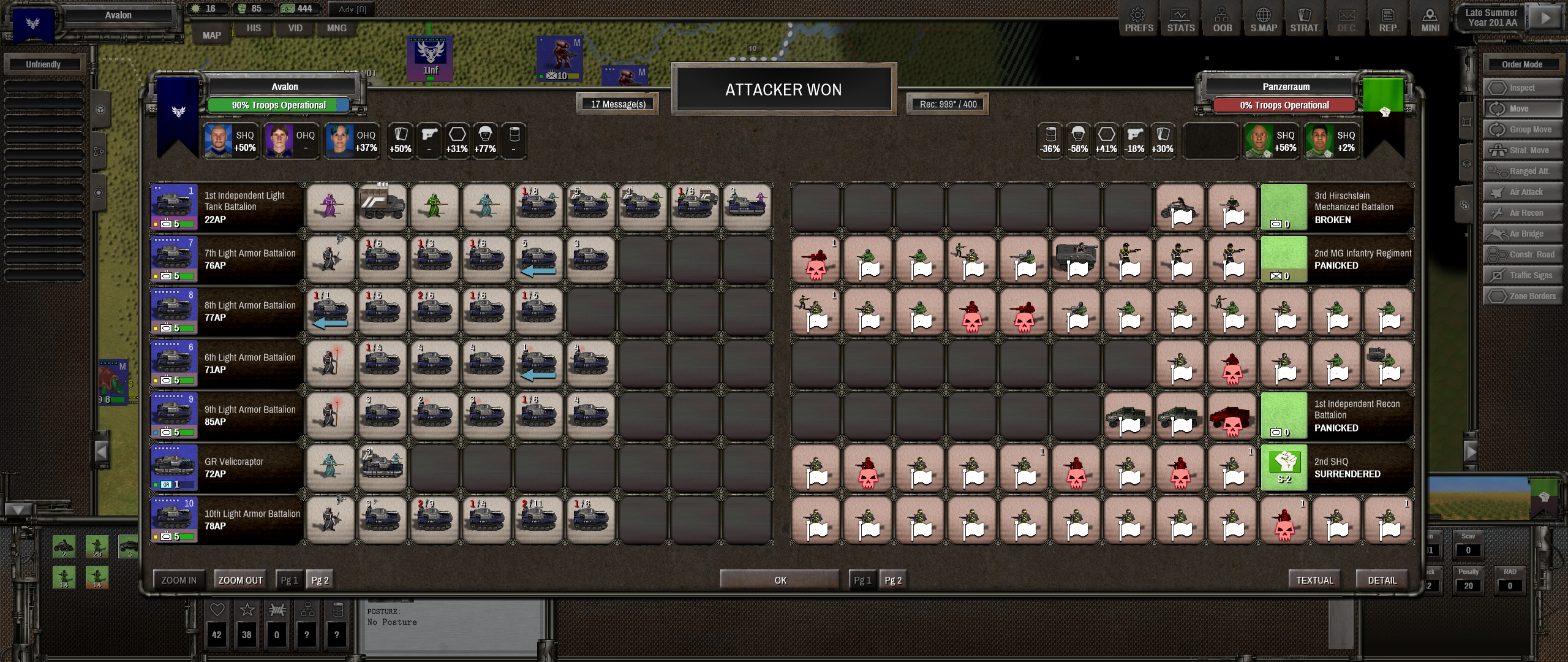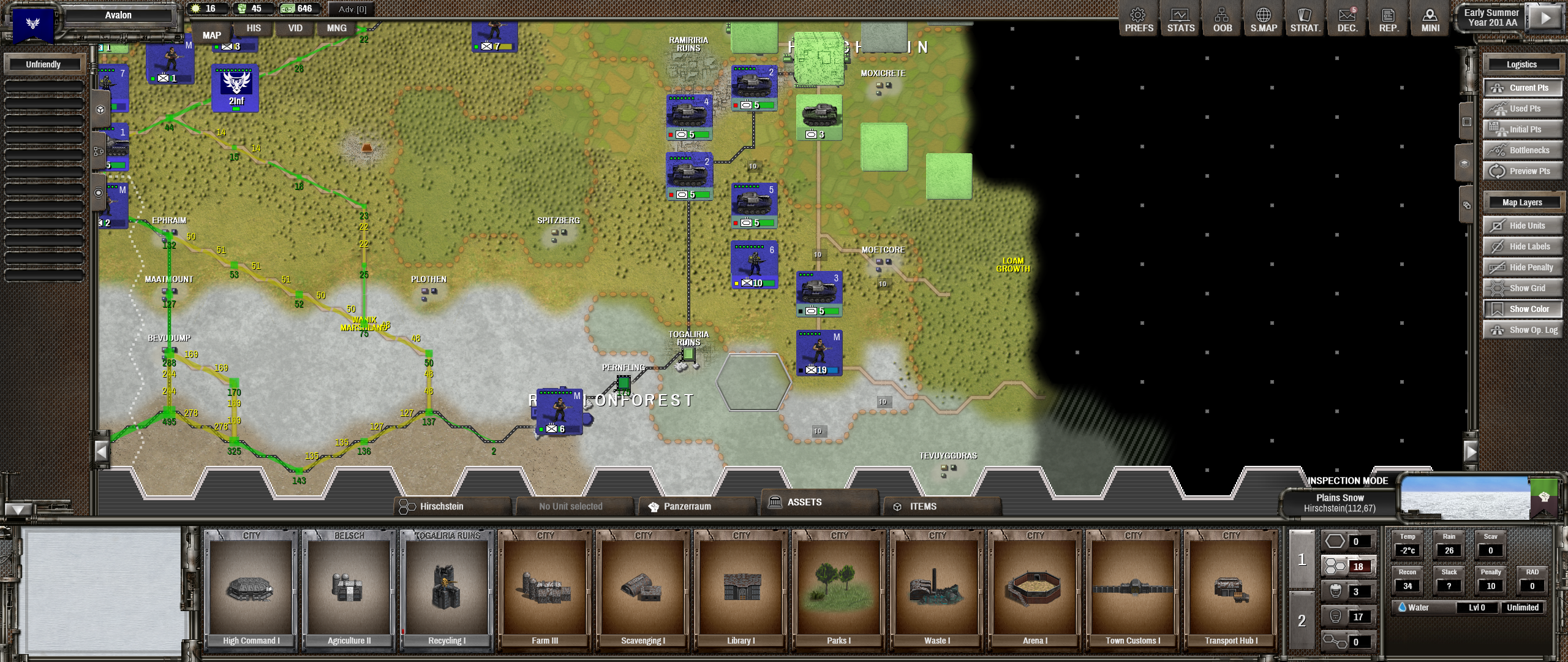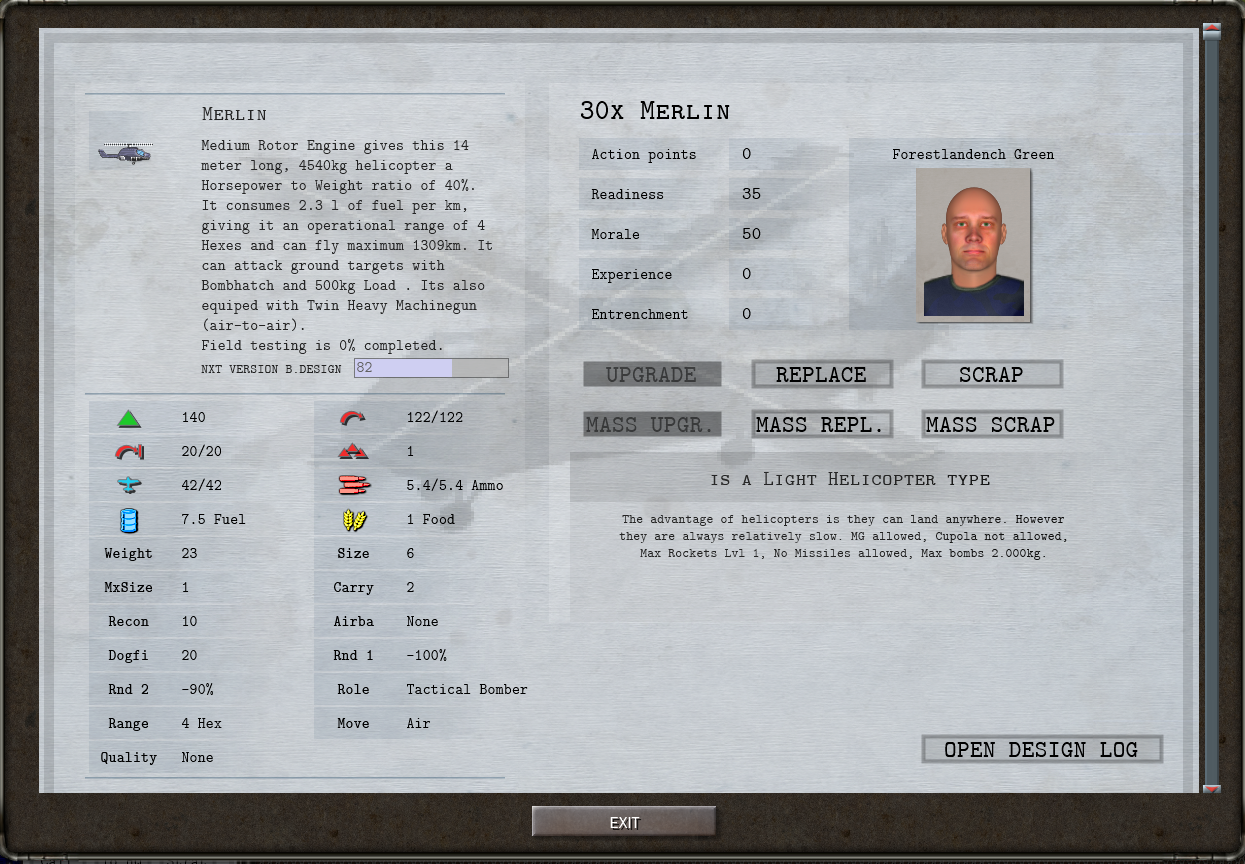For the past week I’ve happily been playing Shadow Empire, a new indie game that straddles the 4X and wargame genres. Now that I’ve won my first game, I think Shadow Empire resembles the Dominions series in its early incarnations: a remarkable game, rough-edged but deep, unique, and all the more remarkable for being the work of one man.
I could best describe Shadow Empire’s premise as a crunchy, simulationist wargame version of the classic Armageddon Empires. Centuries after the fall of the Galactic Republic, civilisation is beginning to re-emerge, and you lead a band of survivors in their fight for control of a post-post-apocalyptic planet. As in 4X games, you build up cities, research new technologies, and expand the empire.
What defines Shadow Empire is its central, wargame-inspired mechanic: logistics. Logistics is central in that it binds together the empire management (4X) and military (wargame) halves of the game, and central in that it is critical to each half. Armies need food, fuel, and bullets, and as in many wargames, there is a supply system that determines whether they receive these — supply flows from HQ, is carried along roads and rail lines, and ultimately reaches the troops. What makes Shadow Empire unique in the 4X genre is that the same system is used for the civilian side of the empire — those same roads and rails are used to ship resources from province to province. Logistics matter!

This has multiple implications. Provinces need infrastructure investment: truck depots, train stations, roads, and railways (and the capital, as the default supply nexus, needs a lot). Campaigning on the frontier, or at the end of a tenuous supply line, is difficult until that infrastructure is in place. Large empires — and large armies — are vulnerable to having their lines of communication severed.
As this highlights, logistics are both a natural “rubber band” mechanism and an important driver of strategy. Early on, my empire was a long, thin, snaky thing, connected by a single railway. My tiny field army was off on the frontier, having just subjugated a band of Mad Max-style raiders. When a major AI empire declared war, and their hordes swarmed towards my heartland — the capital and the railway — my eyes popped. If they had taken the railway, they could have cut my empire in two! I frantically raised new troops and rushed my existing armies home, abandoning the newly conquered raider territory. In time, I pushed the invaders back; and either I did a good job of cutting them off from supplies, they recruited more troops than their economy could support, or something went badly wrong on their home front, because their troops were consistently “hungry” or “starving”. But as I drove them further and further back, now it was my turn to run into supply issues: my vanguard would sometimes have to pause until the supply infrastructure could catch up.
Once a secure supply line is in place, the rest of the military side of the game is relatively straightforward. There is a lot of maths under the bonnet, but the basics feel familiar and sensible: infantry doesn’t do well at charging machine guns; tanks and artillery are much better at breaking through; and encircling enemy armies is much better than trying to grind them down in a war of attrition. My playbook from other wargames, such as Unity of Command 2, worked a treat: break through the front line, cut enemies off from their supply, and seize cities by coup de main. And I could do this because my army was smaller than my AI opponents’, but better equipped with tanks and motor transport1.
As this highlights, I think Shadow Empire is a lot less complex, or at least much easier to understand, than it seems at first glance. There are a lot of systems running in the background, but cause and effect follow clear, intuitive logic. So for example, during setup, the game generates different biomes and climactic conditions across the world, which affects rainfall across the map. This sounds complicated … but it makes intuitive sense that my population needs to be fed, and that crops need water to grow; so building farms in a lush coastal province is better than building them in the desert. Similarly, tanks need fuel to run. So if I’m running low on fuel — say, because my enemy has conquered my oil wells — I can cut civilian consumption by adopting renewable energy; cut military consumption by researching more efficient tank engines; or increase production by drilling new wells and investing in bio-diesel. The challenge comes from first, the “quirky” user interface, and second, the sheer novelty of the game’s concepts.

And there really are a lot of novel concepts. There’s a Distant Worlds-style private sector. There’s the hard science fiction world generation at the beginning of each game, which determines climate, habitability, the edibility of local plant life, the hostility of wildlife, the extent of pre-fall ruins, the amount of radiation in the environment, and more. I’ve seen screenshots of other players’ games with giant 6m-tall wildlife rampaging around.
There are also a lot of rough edges. Now that I’m becoming used to the UI, my main complaint is extremely slow late-game turn times. By around turn 100, it took 5 to 10 minutes to process the AI’s turn! I resorted to streaming TV, while periodically alt-tabbing to check on whether the game was ready. The developer has been very active with patches — one week since release, it’s already up to version 1.03 — so hopefully this can be addressed2.
I think the ultimate compliment is that I want to return to this game. It looks to have the replayability of good 4X and grand strategy titles: I want to try high-tech starts, tropical worlds with hostile life, and more. With luck, it will have the same longevity as the genre’s greats.
Further reading
The Wargamer’s glowing review put Shadow Empire on my radar.
Enjoy the site? Subscribe below to receive email notifications:
- At first I thought this was an AI failing — the two empires I fought relied mostly on gigantic human wave armies. But on the final turn of my game, I encountered another empire that was small, but well-equipped and technologically superior. So perhaps the AI has different play-styles? ↩
- There has already been one bugfix that addressed turn speed. I started playing with the launch version of the game so I don’t know if this was fixed by the patches, or if I would need to start a new game. ↩






